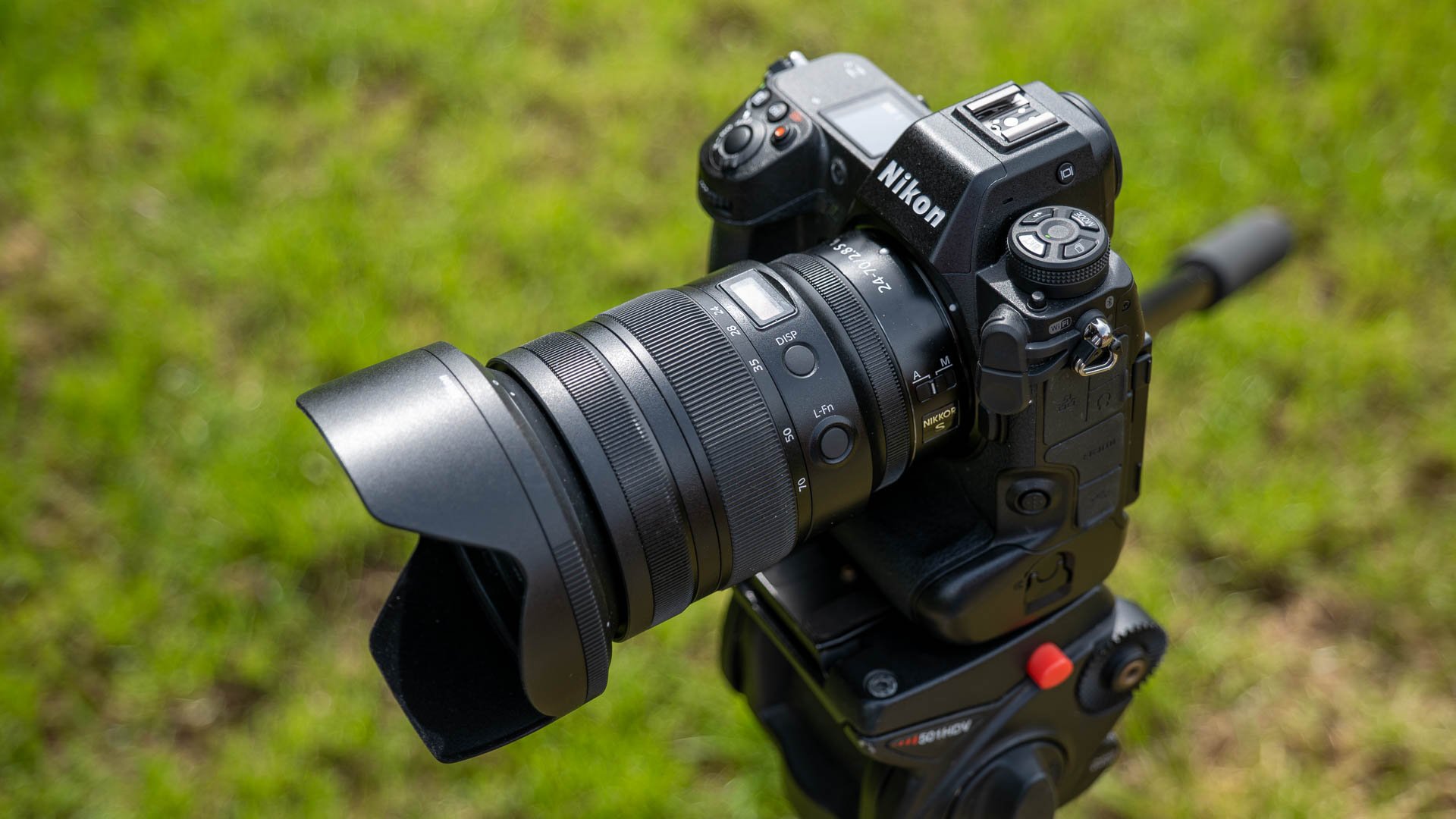
The Nikon Z9 is a hot topic right now for many reasons. We review the Z9, what we think is the most exciting camera for a very long time.
Cameras these days are, for the most part, a known quantity. It's almost impossible to find one that doesn't produce an excellent image, so most purchase decisions come down to other factors. So does the Z9 tick boxes that other cameras fail to reach? Let's find out.
Initial impressions
The Nikon Z9 is a large camera due to the fact that it effectively has a built in battery grip. The camera can be held in any orientation, with controls designed for either horizontal or vertical hand holding. Surprisingly however, despite its size, even with a 100-400mm telephoto zoom mounted to it, it’s still lighter then my Panasonic S1 with a 24-104mm attached. Not by much, but it’s noticeable.
As you’d expect, the build quality is excellent, and the entire rig feels good to the hand. It’s a nice camera to hold, with the grips offering lots of finger support in both orientations, with button controls that are close to hand. The rear LCD display isn’t a fully articulating affair like some other cameras. In fact it’s very similar to the S1 in that it can tilt upwards and downwards and to the right, but it can’t be placed into a selfie style orientation. You might question why that would be required on a camera aimed at professional shooting, but for self video shooters from a tripod it can be useful to have.
The battery is quite sizeable, with a 3300mAh capacity (36Wh), and fills the base of the device, so on first looks it appears that it should give a decent amount of video runtime or stills shots. Just as well, because it isn’t quite as pocketable as a spare if you need one versus alternative camera models. You should get around 700 shots or more out of it.
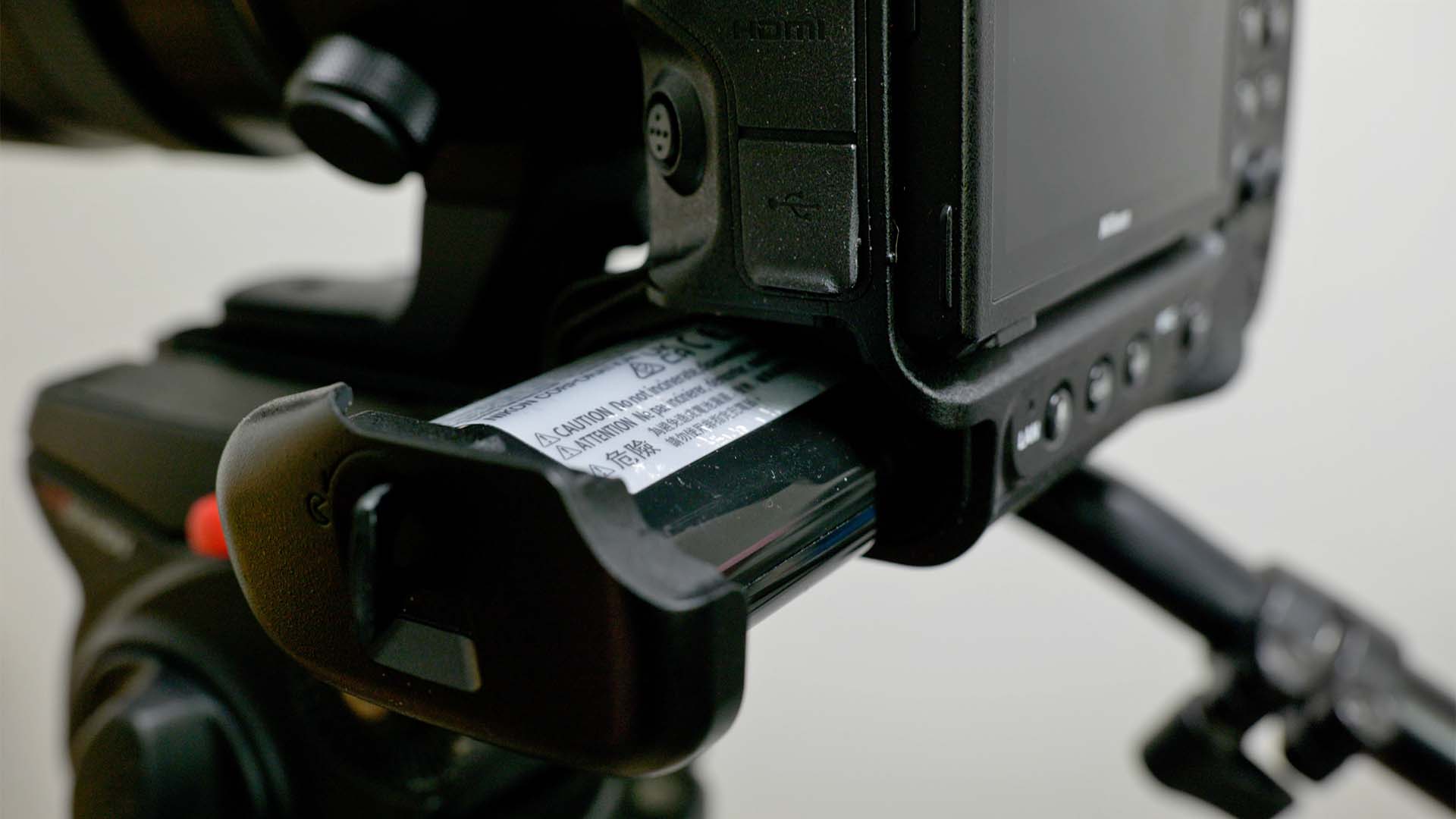
The battery on the Z9 is pretty sizeable.
Connectivity wise there are the usual suspects such as a full size HDMI port, 3.5mm mic in, and USB-C. What isn’t usual is the inclusion of an Ethernet port LAN control. The camera also supports wireless LAN as well. Recording of imagery is performed to two CFexpress Type B/XQD card slots. There’s no SD card option here, which isn’t surprising given the amount of data transfer that will take place from the Z9’s 45MP sensor.
The storage card situation is a clear indication of where the Z9 is aimed. This is no hobbyist device. Due to the storage requirements and data transfer speeds that are required, as well as the high frame rates that are possible, you won’t be getting away with a simple 64 or 128GB card here. In order to have an effective amount of storage for stills for a day of sports shooting, you’ll be looking at 512GB at least, and with video you’ll be looking at much more. With 4TB cards upwards of £2k, this is a serious investment proposition. Can you record externally? You can, but you won’t be able to take advantage of some of the Z9’s main selling points.
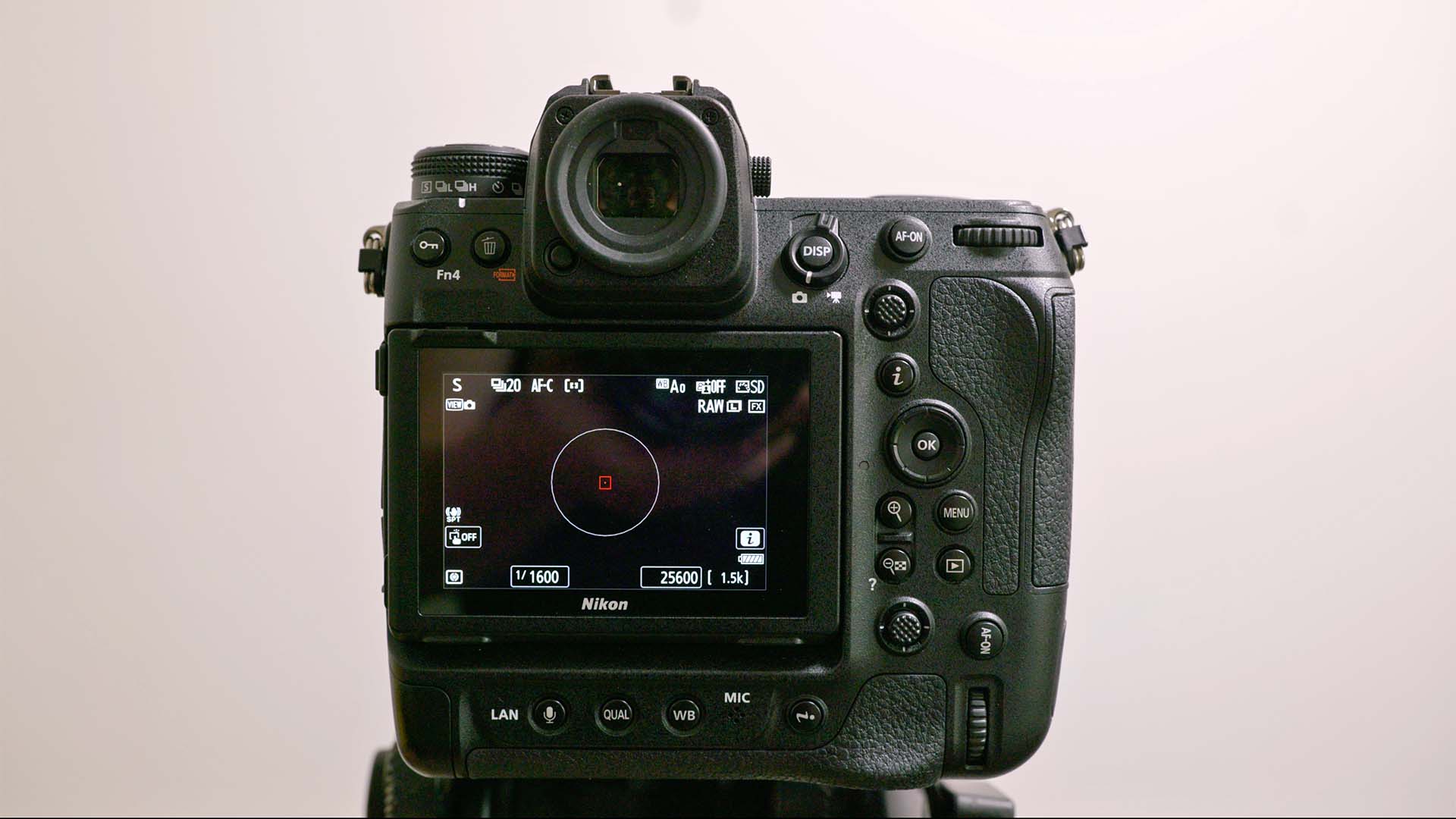
The Nikon Z9 control layout works really well.
The Z9’s sensor is a full-frame 45.7MP stacked affair, giving a maximum stills resolution of 8256 x 5504. It features sensor shift stabilisation, and can be driven to a maximum of 102400 ISO in the extended mode. In fact the Z9’s resolution and sensor spec is very similar to the Z7. However, it’s the headline stills burst speeds that are most interesting. The Z9 can take raw bursts of up to 20fps with a 1000 frame buffer, 30fps in JPEG, and up to 120fps as 11MP JPEG images, with no slowdown, which is more than enough for many purposes. This would seem to make the Z9 a sports photographer’s dream, although as I mentioned, you’ll need to make sure you’re packing the card capacity to match!
Using the Nikon Z9 for stills
The Z9 isn’t compact, but it is still pleasant to use and to hold. Remember, this is a camera that is really designed for professional use rather than to take your holiday snaps with, so any notion of compactness needs to take a back seat.
Using the camera’s menu system and setup features was straightforward and clear to do without the need to constantly resort to a manual, although you might want to consult it for the fine detail of how the different focus modes operate. Full animal, human, and object detection features, along with a “3D” mode, which can keep locked onto a subject of your choosing without being distracted by other people who might enter the frame.
A significant feature of the high speed continuous burst stills settings is that the Z9 can perform full object tracking and continuous autofocus and exposure throughout the burst. Not all cameras can do this, and it is a major selling point of the Z9 for sports photography. I found that the system worked pretty effectively, and although it wasn’t infallible, it is certainly a reliable system. Autofocus as a whole was lighting fast and accurate to lock on initially, although I have yet to find a camera that passes the “Dolly the dog” test. Dolly is my Cocker Spaniel/Patterdale cross, and she can run like a greyhound and I have yet to use a camera that can lock focus on her when she’s running towards me!
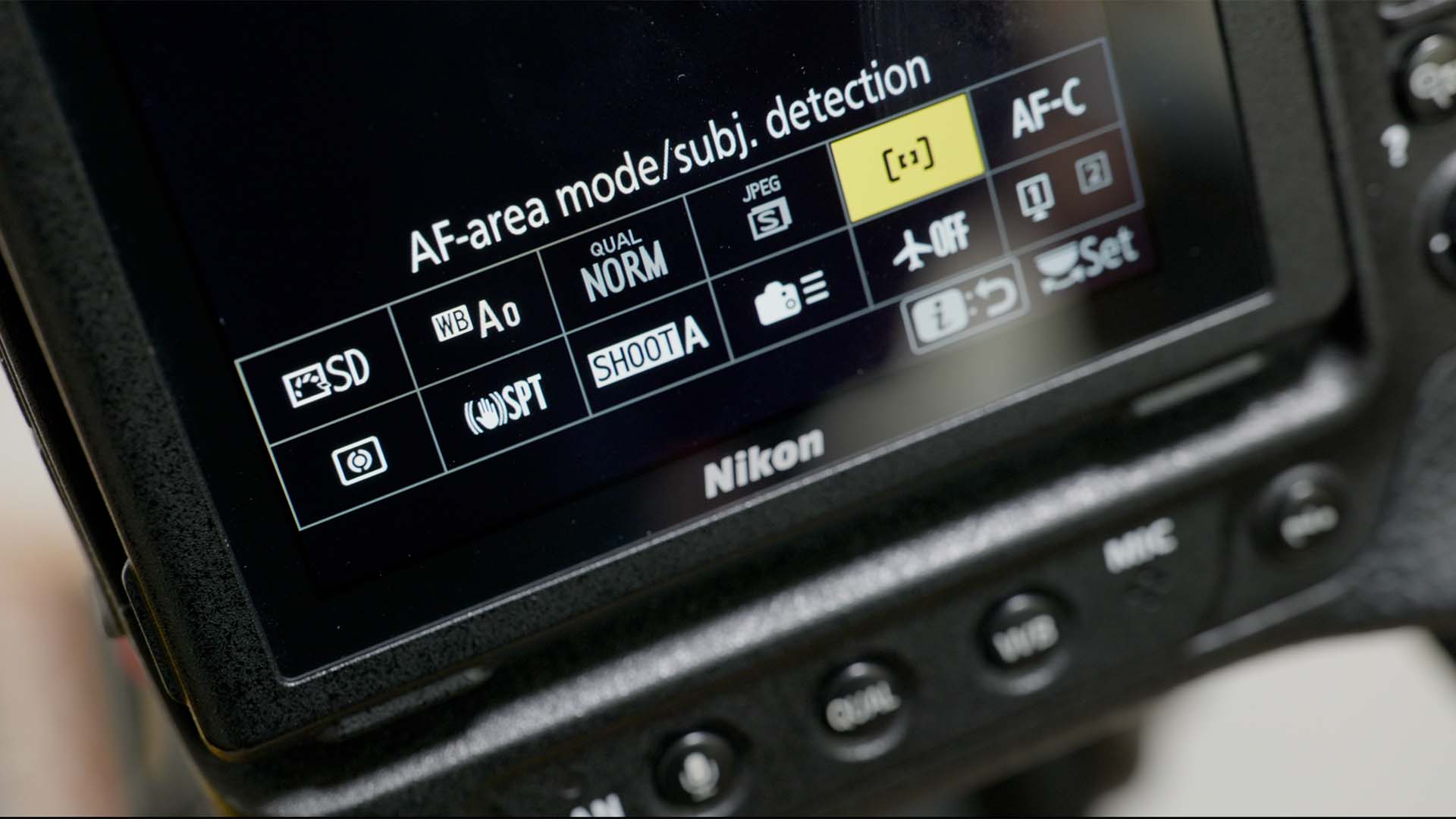
The quick set up menu on the Z9.
Another significant change with the Z9 over other mirrorless devices is that it consigns the mechanical shutter to the dustbin. Nikon isn’t the only company to have done this. Sony has done the same with its A1, too. Doing this offers numerous advantages, despite the protestations of some. For one thing it means that the resale value of your camera is no longer held hostage to shutter counts. It also means that when you are using the high speed burst modes the viewfinder doesn’t suffer any blackouts or stuttering. When you press the shutter button, your only indication that something is happening is an indication frame that appears around the edges of the viewfinder, and an audible shutter sound. Again, for sports this is absolutely fantastic because it means you can continue to follow the action much like you would when taking video.
Aha! I hear you cry! What about rolling shutter? It’s a non-issue. The sensor readout on the Z9 is so fast that any rolling shutter effects are absolutely minimal. You can fast pan as much as you like and there’s barely a wobble. Yes, if you really, really look, you can see the effects. But 99.9% of the time it’s just not an issue, and that goes for video as well, which I’ll come to later.
The write speeds of these high speed bursts is so fast that you can seemingly just fire them off to infinity. There’s no pause after taking burst shots while you wait for the card to be written to, thus risking missing a shot. Everything is effectively instantaneous, which for anyone who’s chosen photography career is in high speed action, or, ahem, harassing celebrities, makes the Z9 a boon.
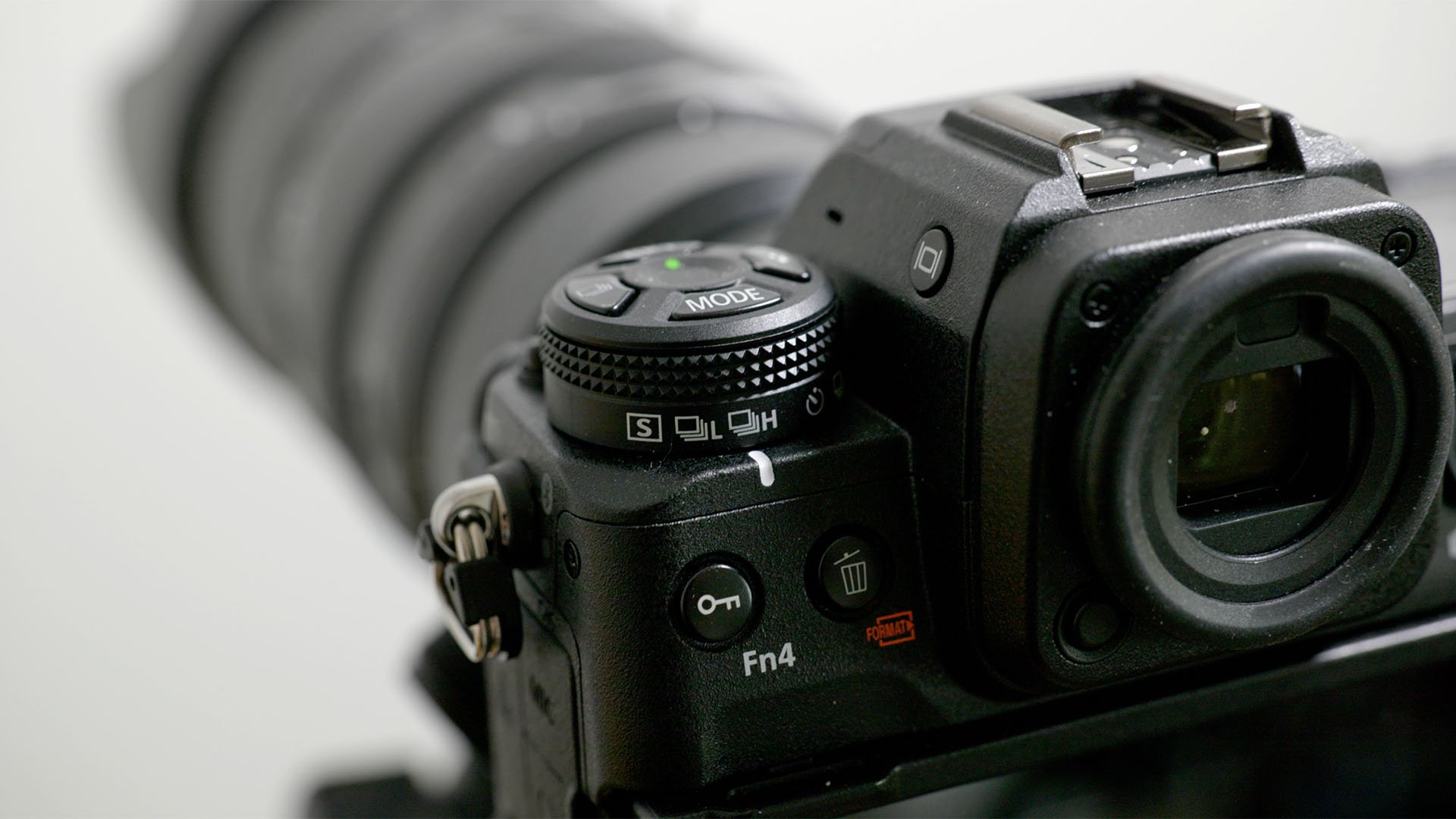
The Z9's main settings dial.
20fps in raw is plenty fast enough for most things, but if you really are after the money shot, you might use the 120fps option. This is limited to 11MP, which is still more than usable for the majority of purposes, although you are limited to JPEG compression, and hence less manipulation is possible in your chosen photo software.
The viewfinder is sharp and clear, and runs at 120Hz, giving a very smooth display. OLED stills viewfinders are so good these days that whenever I have gone back to a camera with an optical viewfinder I sometimes have to check whether the lens cap is still on! In fact I will say right now that I do not like using optical finders any more. They are a relic. Goodbye.
Yes, you can tell me about battery life, but frankly that’s a poor reason not to prefer OLED. You can, and should take spare batteries with you on any photoshoot you consider important. The Z9 does pretty well battery wise, and by the time I’d filled the provided 64GB card with images, the battery had barely fallen by one bar on the display.
Likewise the rear LCD display is extremely bright. I didn’t realise how bright until I used my S1 afterwards. I could view the Z9 display easily to review images on the bright sunny day I was taking photos on whilst the S1's fell into darkness.
Z9 stills quality
Image quality is, as you’d expect, extremely high, and more dependent on your lens than the camera itself. Even at high ISO levels noise is controlled well. In fact I like the noise pattern in general with the Z9 because it has a pleasing, organic structure to it. At the full 45MP, texture is reproduced exceptionally well. In some photos of freestyle kayakers I took, I was surprised to see the fine texture of their clothing, including very subtle ripstop fabric construction, which often gets lost with most cameras I have used. This amount of fine detail won’t be present once the images are reduced and compressed for social media, however starting with higher resolutions always gives a better result even at reduced sizes. It also gives you more options for cropping.
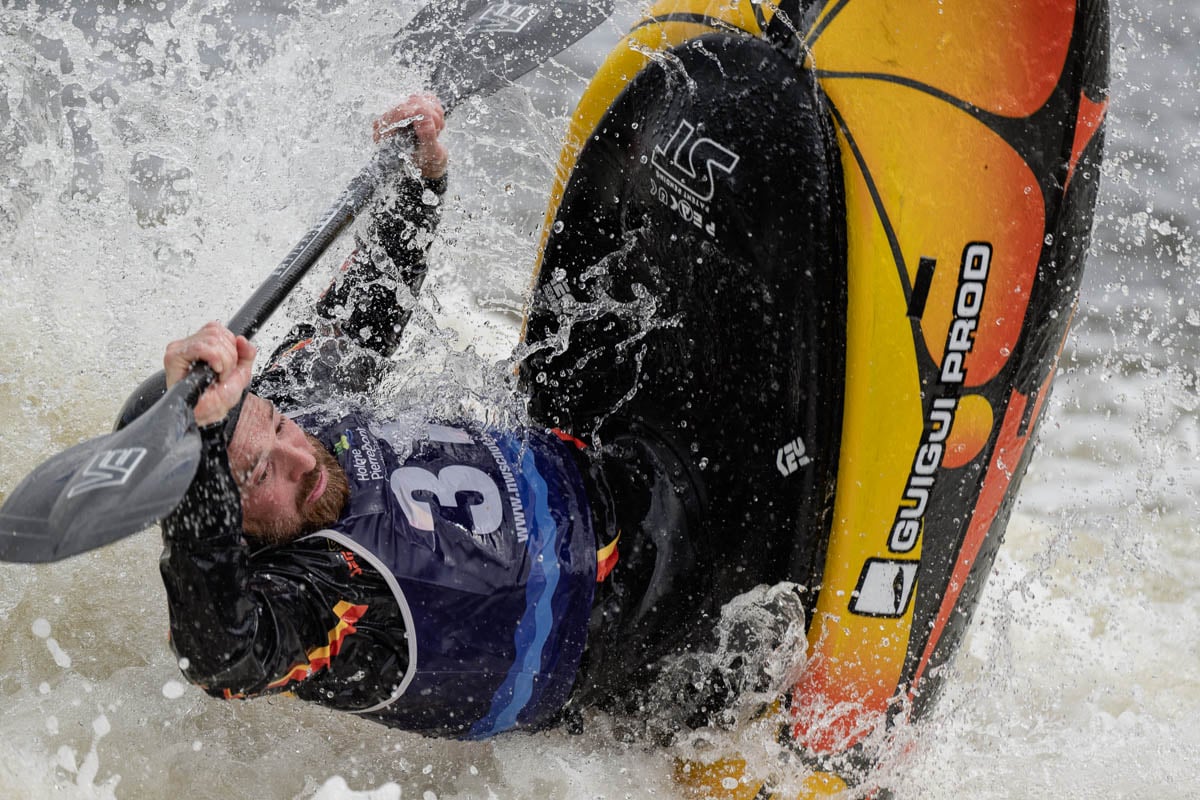
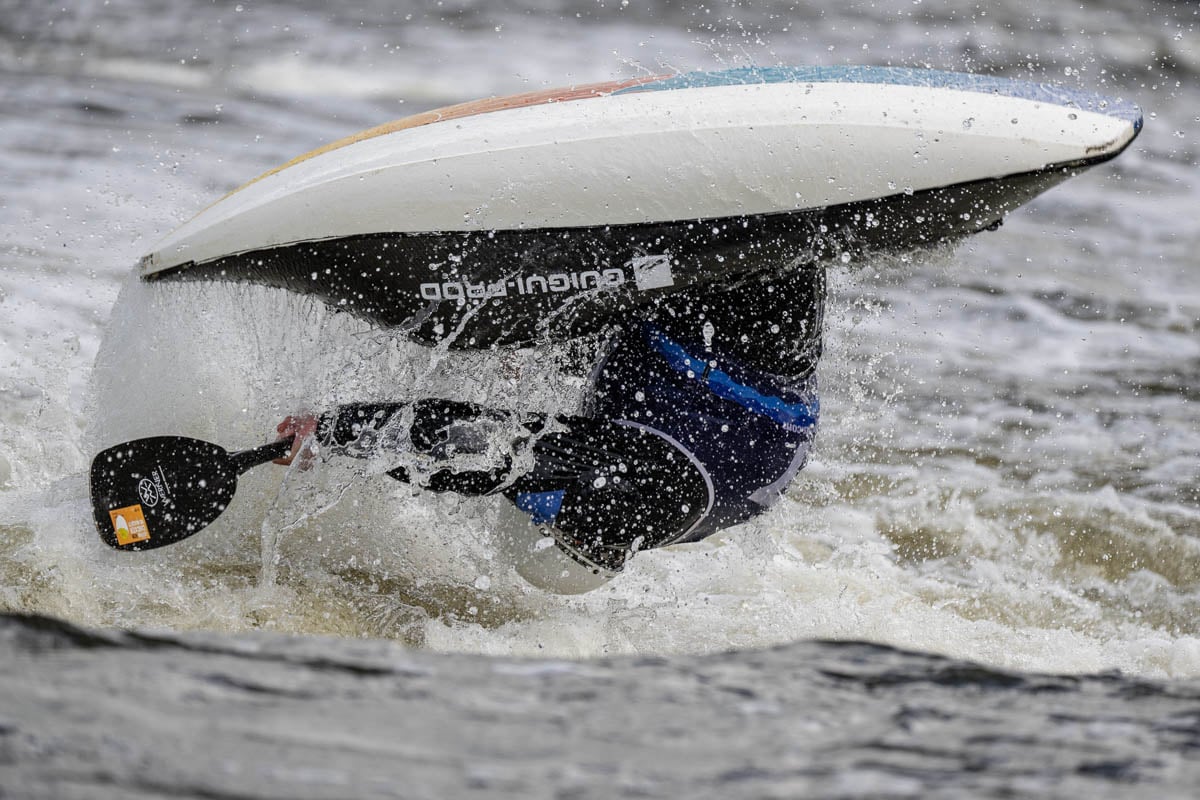
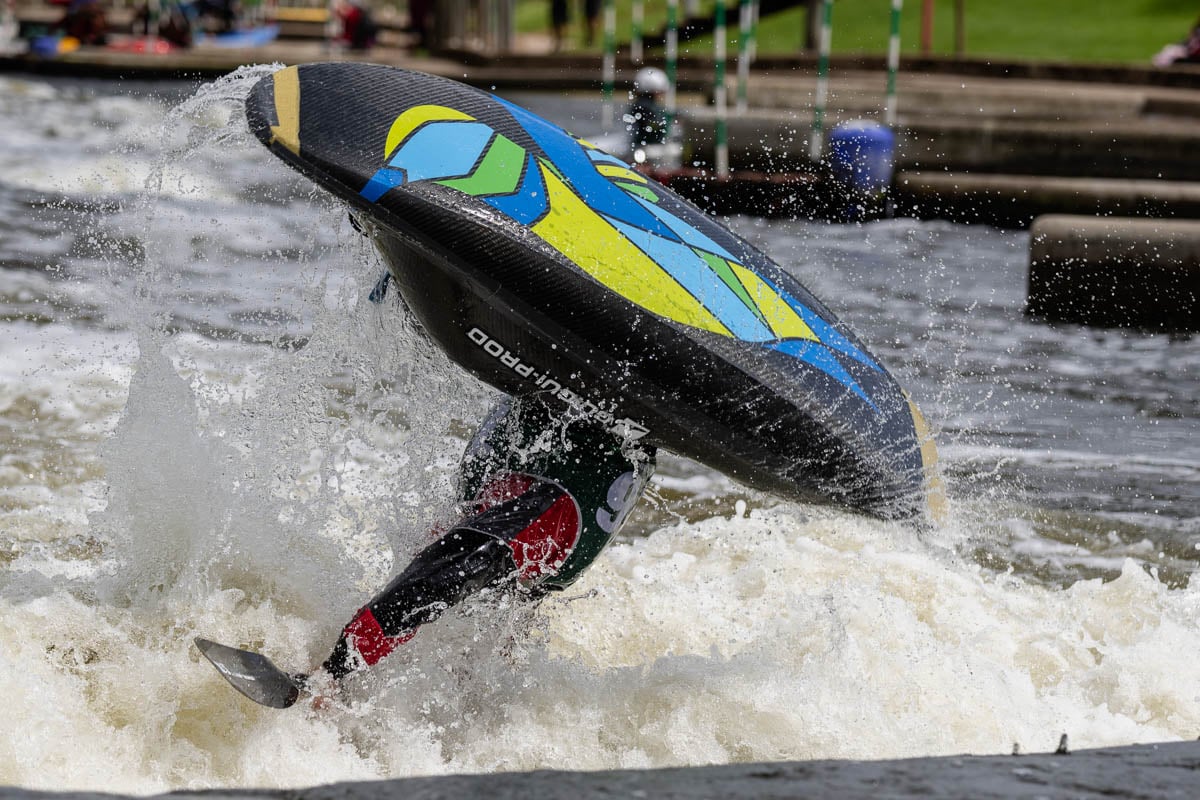
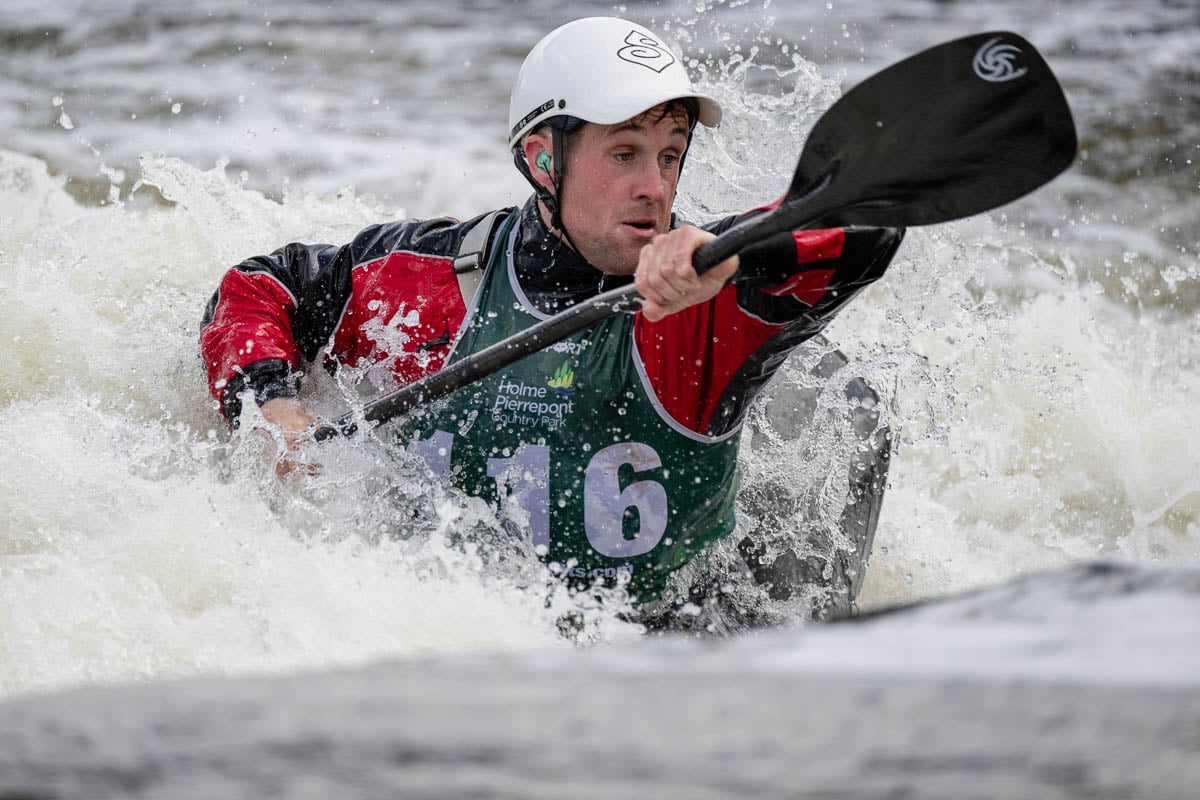
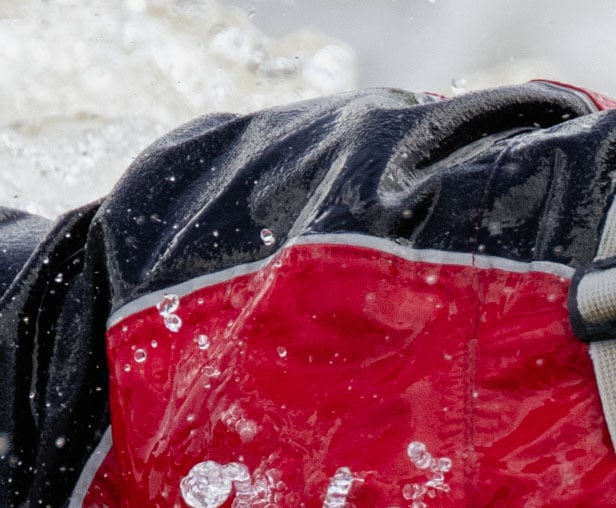
Fine texture detail from the image above.
When you’re following fast action, having a 45MP sensor allows you to be looser with your composition to make following the action a little easier knowing that you can crop in later with barely any drop in useful resolution.
Colours are truly lovely right out of the camera. Looking at some of the creative grades photographers often do to images it seems a shame to adjust them out. I’m a huge fan of trying to keep colours as they were at the time and let nature do the speaking if I can, focussing on adjusting shadow and highlight levels for the most part. The Nikon Z9 gives you an image that is very pliable, but also one that often doesn’t require much manipulation to get the final picture.
Using the Nikon Z9 for video
The Z9, in case you’ve been living under a rock, has some of the best video specifications of any mirrorless camera on the market. There are too many different video modes to go through individually here, however 8K at up to 60fps in raw is possible, as well as 4K at 120fps. Depending on the codec you select, many of the modes available will be either in full-frame or cropped mode, and I’ll come to that in just a moment. However, first let’s tackle the question of another raw format.
The Z9 can record internally to ProRes RAW, as well as ProRes HQ, H.265, and H.264. But it can also record to Nikon’s own compressed raw format, N-RAW. In can hear the groans out there as we have yet another codec to deal with. However, I think that N-RAW is one of the best things about the Z9’s video functionality.
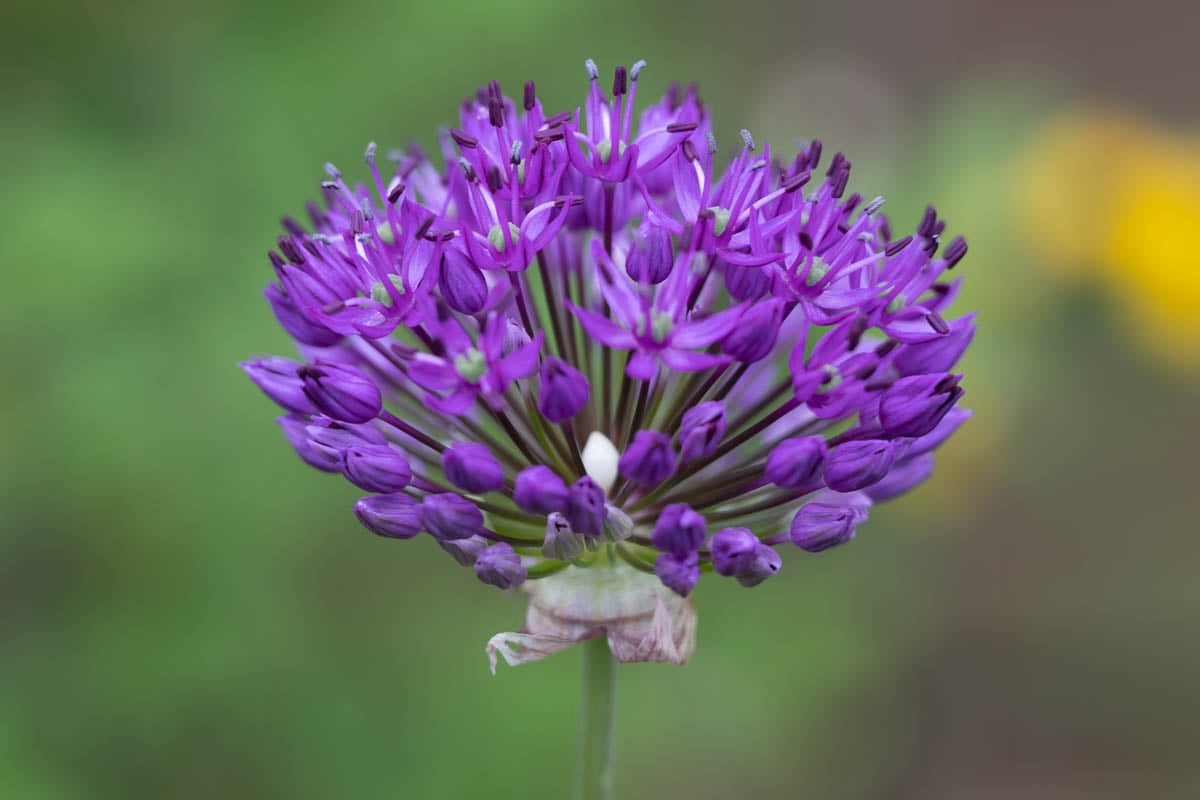
Colours are great right out of the camera.
Until now we’ve had ProRes RAW making the rounds via external recorders on different cameras, as well as BRAW on Blackmagic Design’s devices. The trouble is that ProRes RAW cannot be used within DaVinci Resolve, and BRAW cannot be used in FCP. If you use Adobe Premiere you can use both, but given the growing popularity of Resolve the ‘exclusive nature of these two raw formats make them next to useless for a good many users. N-RAW solves this by giving a raw format that doesn’t suffer from company rivalries interfering with the ability of editors to do their jobs properly. N-RAW can currently be used in Resolve and Edius, but companies like Apple are perfectly free to give support as well.
N-RAW is built upon intoPIC’s TicoRAW codec, which we featured on RedShark back when it was first announced in 2021. Back then we posited the question of whether TicoRAW would, or could even gain traction, and now we have the answer. The important thing is that the Z9 gives you a choice. Even if Apple decides not to support N-RAW, users can still use ProRes RAW, and for those who use Resolve, N-RAW is the alternative option.
TicoRAW promises to be one of the most efficient compressed raw codecs out there, with a claimed 54 minutes of record time for 8K/60 on a 1TB card. Alas my review camera was only supplied with a 64GB card giving me, erm, two-minutes of record time at such a resolution. If you’re wondering why I haven’t made a full example video like I normally do, that’s your reason why. However I will upload some raw samples for you to download at your leisure at a later date.
Depending on the codec and frame rate you use, the camera will run in either FX or DX crop mode. So, for example, if you are recording N-RAW and you choose to use 2160P at 120fps the camera will crop the image. If, on the other hand, you use the 10-bit H.265 codec and record 2160p at 120fps, you’ll see a full frame image.
Extended supersampling of the 4K image can be enabled in a menu for 50/60p frame rates in FX mode. This gives you a 4K images that has been supersampled from 8K, giving a better result.
One thing I like about the Z9 is that you can access the frame rate and resolution settings via a quick menu rather than needing to go into the main menus all the time. This same menu is also used to set up features such as the autofocus and picture profile settings.
As I mentioned at the top of the article, if you are serious about making best use of the Z9 for video, you’ll need a large and fast Type B CFexpress card. The Angelbird 1TB AV Pro model is a good place to start, but for serious shooting you’ll need a good number of them, adding to the cost of a fully working system.
You can’t get around this with an external recorder, either. The maximum output from the Z9’s HDMI socket is 4K UHD in 10-bit log, and if you want 120p externally you’ll have to live with 1080p. So while the Z9 is a video powerhouse, it also costs a fair chunk to make use of it with the internal recording features.
A bit of a warning to Apple silicon users, however. Currently the N-RAW codec isn’t properly supported on Apple silicon. If you try to use the codec within the Resolve 18 beta you will need to force the software to run under Rosetta II, otherwise all you’ll see is an audio waveform. Hopefully this will be corrected soon, and fast!
Conclusions
The Nikon Z9 is an absolute beast of a camera, that much is true. In many respects, aside from size, it’s possibly the best mirrorless camera in existence right now. Demand for it is so high that used models are coming onto the second hand market and selling for two-grand more than a new one, such is the limited supply of them.
As per always, the limited time us reviewers get to spend with a camera means that going into depth on every aspect, particularly with a camera as comprehensive as the Z9, is next to impossible. But what I have experienced with it has left me thoroughly impressed. That said, for a large portion of people who may be drooling over the prospect of owning one, the Z9 will be too much camera, and he number of people who will be able to make use of its full video capabilities will be comparatively low, impressive as it is.
On the other hand, for sports photographers who make a living from their craft, the Z9 will probably make its money back pretty quickly. There’s no denying that while internal compressed raw video recording is fantastic to have, it’s the incredible high frame rate stills capabilities along with continuous tracking, auto exposure, and autofocus that really stands out here. Yes the Canon EOS R5 can also do 20fps with the electronic shutter, but the buffer is far more limiting on that camera, with 180 images possible before slowdown. The Z9 has no such issue, chewing through stills bursts as fast as you can shoot them.
The Nikon Z9 is a camera that anyone with a lust for camera porn will want to own. Even for many professionals, however, the Z9 may be more than they ever need. But I cannot deny that it is the most impressive mirrorless camera I have used yet and it shows very strongly where all stills/hybrid cameras are heading. The future is shutterless, with sensor readouts so fast that rolling shutter is barely an issue. It’s one where we can take stills as fast as video. Indeed, you could use the Z9 in 8K mode at 60fps using N-RAW and you’d be able to pull 33.2MP stills from the sequence with all the same grading flexibility as adjusting an NEF raw image.
If you are a serious photographer, one who really cares about the images you produce, and the camera you use is the one you depend on to make a living with, you’d be stark raving bonkers not to give the Z9 very serious consideration. At £5,299 it costs less than the forthcoming EOS R3, which can shoot 30fps continuous bursts, albeit at half the resolution, and it’s also £1200 less than Sony’s flagship A1. There is the question of lens range, although Nikon's Z Mount is gaining new glass all the time. Lot's to consider, then.
Tags: Production Review Cameras


Comments